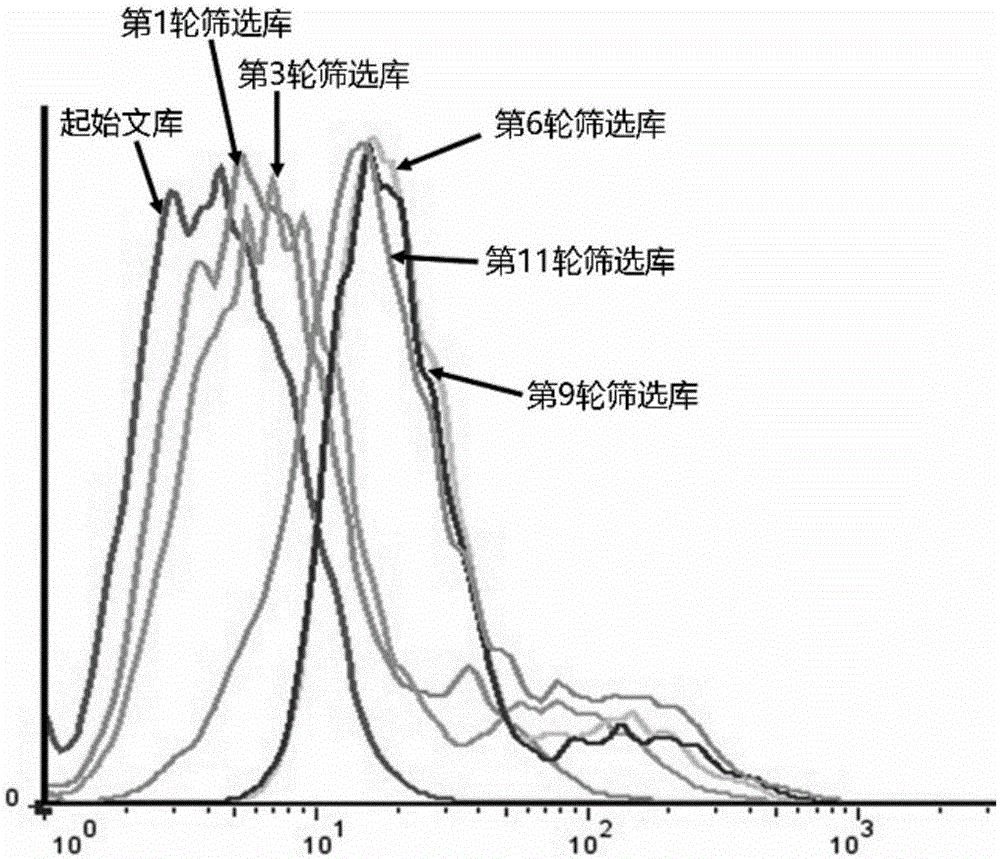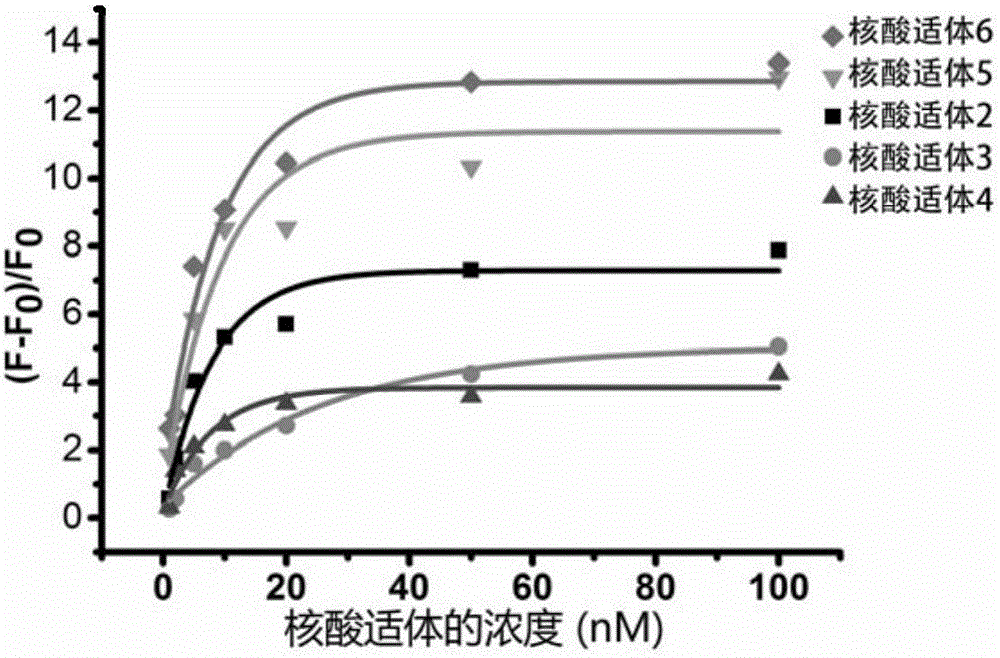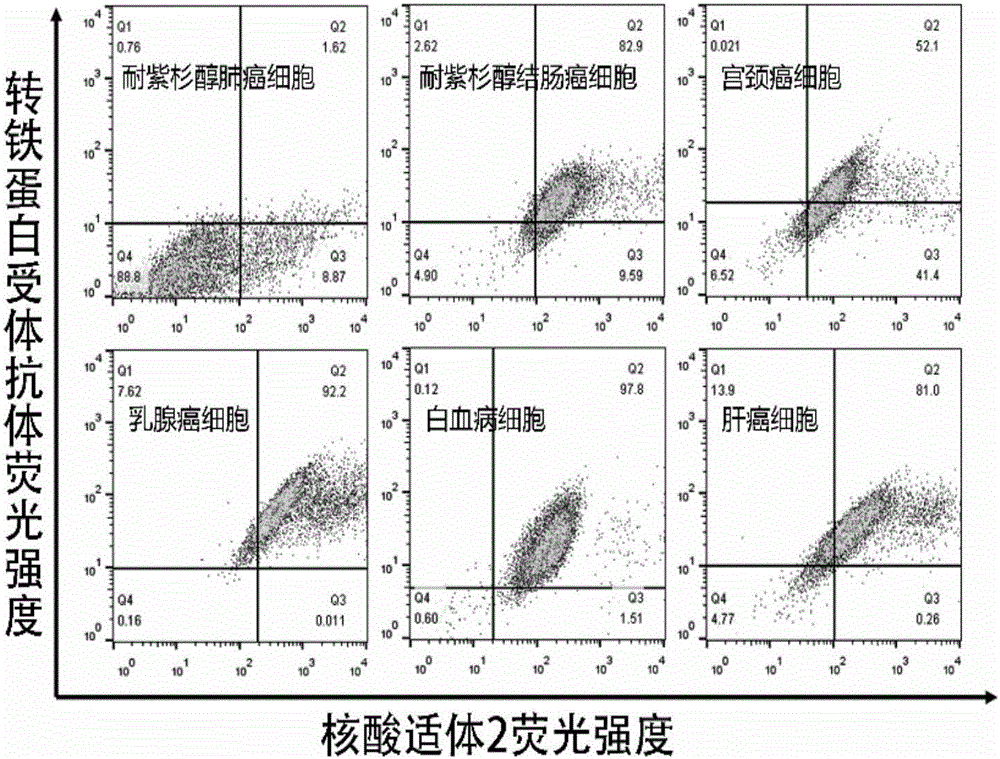Nucleic acid aptamer sequence for recognizing and being combined with human transferrin receptor and application of nucleic acid aptamer sequence
A nucleic acid aptamer and transferrin technology, applied in the field of biochemical analysis, can solve the problems of large batch differences in antibody activity, prone to interactive reactions, and high price, achieving the effects of no immunogenicity, short cycle, and easy storage.
- Summary
- Abstract
- Description
- Claims
- Application Information
AI Technical Summary
Problems solved by technology
Method used
Image
Examples
Embodiment 1
[0078] Example 1, Screening and Preparation of Nucleic Aptamers
[0079] 1. Culture of paclitaxel-resistant colon cancer cells and sensitive colon cancer cells
[0080] 1. Culture of paclitaxel-resistant colon cancer cells
[0081] Paclitaxel-resistant colon cancer cells (HCT-8T) (purchased from Jiangsu KGI Biotechnology Co., Ltd. (Nanjing)) were treated with RPMI 1640 (containing 10% fetal bovine serum, 1% penicillin / streptomycin) supplemented with 0.1 μg / mL paclitaxel Cultured, inoculated into RPMI 1640 (containing 10% fetal bovine serum, 1% penicillin / streptomycin) without adding paclitaxel and cultured for one generation before use.
[0082] 2. Culture of sensitive colon cancer cells
[0083] Sensitive colon cancer cells (HCT-8) (purchased from Jiangsu KGI Biotechnology Co., Ltd. (Nanjing)) were cultured with RPMI1640 (containing 10% fetal bovine serum, 1% penicillin / streptomycin).
[0084] All the above cells were routinely cultured in an incubator (37°C, 5% CO 2 ), p...
Embodiment 2
[0116] Example 2. Binding Ability of Nucleic Aptamer to Paclitaxel-resistant Colon Cancer Cell HCT-8T
[0117] The nucleic acid aptamer 2, nucleic acid aptamer 3, nucleic acid aptamer 4, nucleic acid aptamer 5 and nucleic acid aptamer 6 obtained in Example 1 were respectively labeled with fluorescein (FAM) molecules at the 5' end to obtain FAM labeled nucleic acid aptamers 2. FAM-labeled aptamer 3, FAM-labeled aptamer 4, FAM-labeled aptamer 5 and FAM-labeled aptamer 6 (synthesized by Shanghai Sangong Co., Ltd.). Each single-stranded DNA (FAM-labeled DNA sequence) was dissolved in binding buffer, and the concentration was calibrated according to ultraviolet absorption, heated at 95°C for 5 minutes, placed on ice for 10 minutes, and left at room temperature for 30 minutes. The denatured-refolded DNA is diluted with binding buffer to a DNA solution with a concentration gradient of 1nmol / L, 2nmol / L, 5nmol / L, 10nmol / L, 20nmol / L, 50nmol / L, 100nmol / L and 200nmol / L (Molecular Probe S...
Embodiment 3
[0121] Example 3. Mass Spectrometry Identification of Aptamer 2 Specific Recognition and Binding to Transferrin Receptor
[0122] 1. Preparation of isotope-labeled Jurkat E6-1 cells and nucleic acid aptamer 2 derivatives
[0123] 1. Preparation of isotope-labeled Jurkat E6-1 cells
[0124] Heavy isotope-labeled Jurkat E6-1 cells (Institute of Basic Medical Sciences, Academy of Medical Sciences (Beijing)) using heavy isotope-labeled lysine ([ 13 C 6 , 15 N 2 ]-L-lysine) and heavy isotope-labeled arginine ([ 13 C 6 ]-L-arginine) culture medium of RPMI 1640; light isotope-labeled Jurkat E6-1 cells use light-isotope-labeled lysine ([ 12 C 6 , 14 N 2 ]-L-lysine) and light isotope-labeled arginine ([ 12 C 6 ]-L-arginine) PMI1640 medium (Thermo company, culture medium product number: 89982). Cells were cultured for 6-7 passages before use.
[0125] 2. Preparation of aptamer 2 derivatives
[0126] (1) Biotin-labeled aptamer 2
[0127] The biotin-labeled nucleic acid apt...
PUM
 Login to View More
Login to View More Abstract
Description
Claims
Application Information
 Login to View More
Login to View More - R&D
- Intellectual Property
- Life Sciences
- Materials
- Tech Scout
- Unparalleled Data Quality
- Higher Quality Content
- 60% Fewer Hallucinations
Browse by: Latest US Patents, China's latest patents, Technical Efficacy Thesaurus, Application Domain, Technology Topic, Popular Technical Reports.
© 2025 PatSnap. All rights reserved.Legal|Privacy policy|Modern Slavery Act Transparency Statement|Sitemap|About US| Contact US: help@patsnap.com



